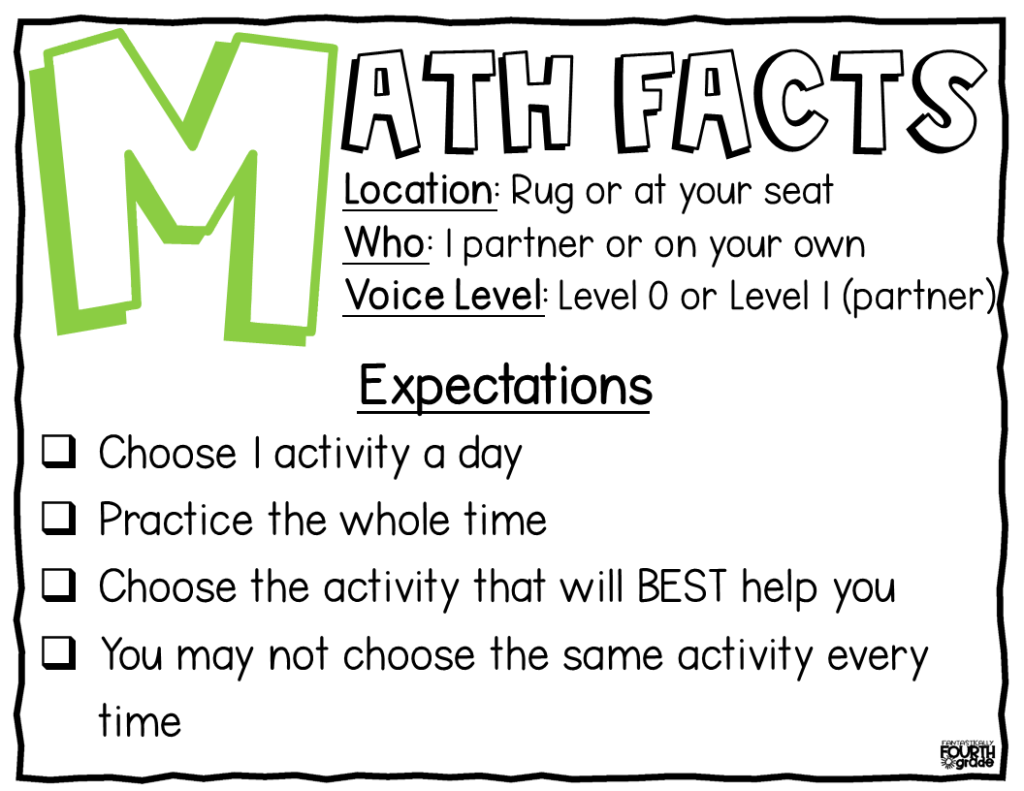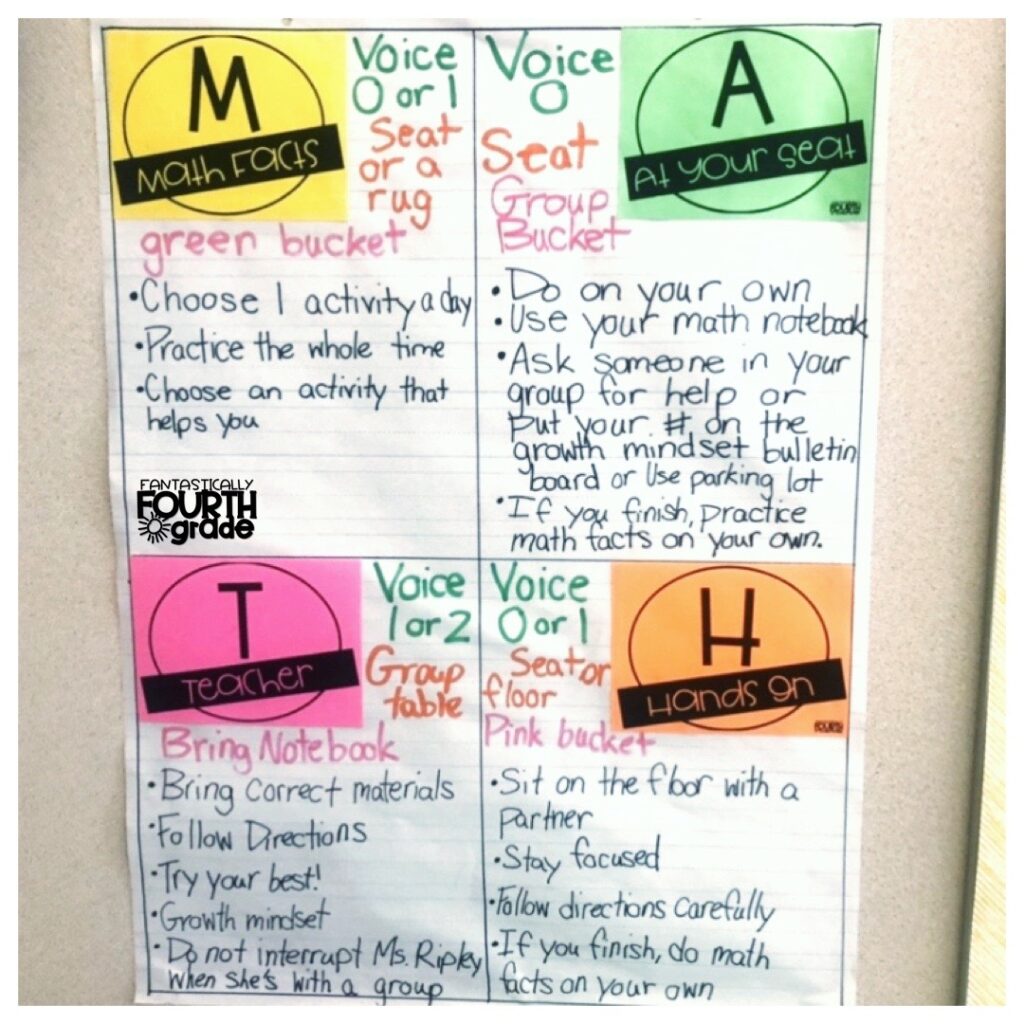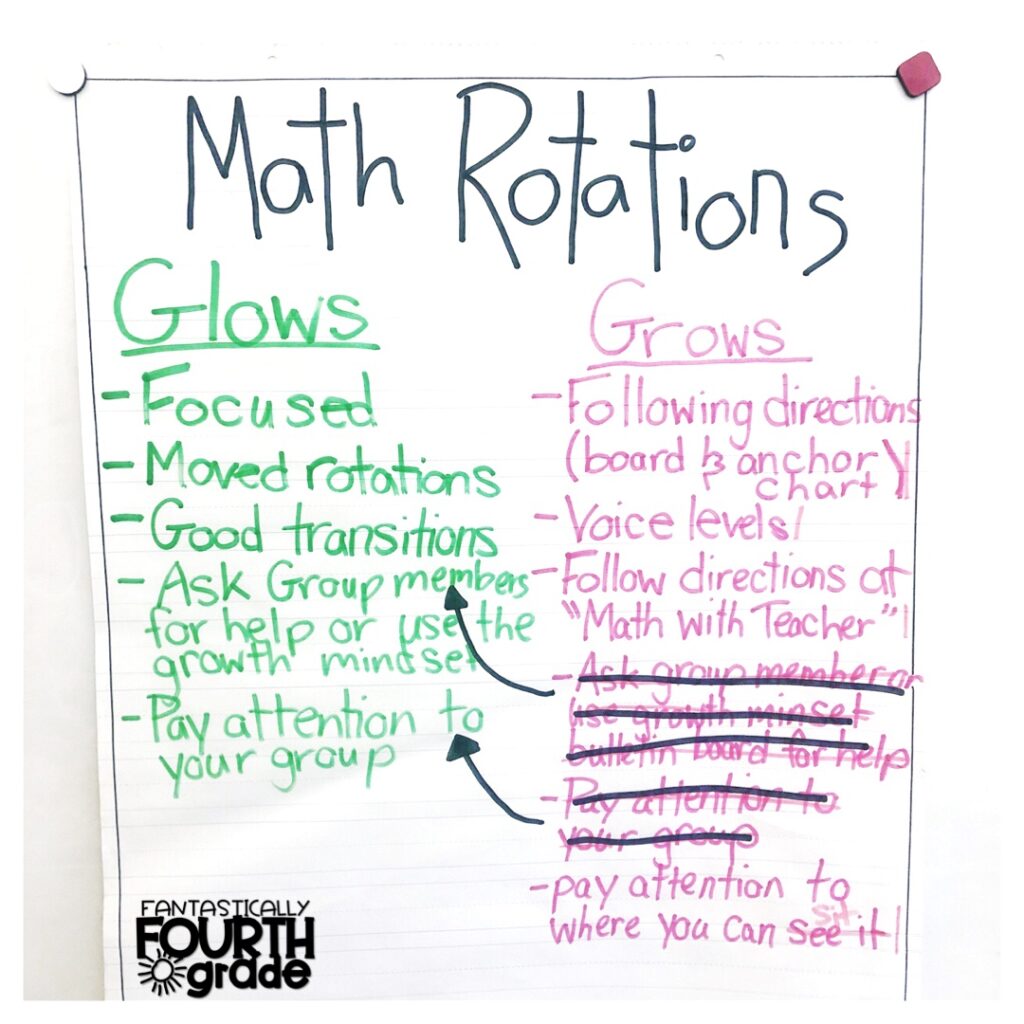When I tell you that I LOVE to talk about management when it comes to Guided Math, that is an understatement! As you probably already know, how you manage your rotations in Guided Math is a huge part of successfully using Guided Math in your classroom. So, our topic today is going to actually be seen throughout this series, but today I am going to focus on setting up expectations with your students.
First of all, I want to remind you that managing math rotations should not be that different with how you manage your classroom on a day to day basis. You will want to make sure you have clear and high expectations for your students from the first time you introduce math rotations. Also, I believe it is very important that these expectations are posted somewhere in your classroom. I will be talking about how to do all of this in this post today.
Creating Expectations
Today, I am going to share with you how I create these expectations with the input of my students. I believe, and have seen from experience, that when we involve our students in creating expectations, they understand them better and follow them more. So, just like I would when creating our class expectations on the first day of school, I have my students help me create expectations for our math rotations in Guided Math. SIDE NOTE: If you did not read my blog post last week about how I structure my math rotations using the M.A.T.H. acronym, click here to read that first because it will help this next part make more sense.
I start by gathering all my students together (I like to have my students sit on the rug to bring us together more) and together we create the expectations for each rotation. I start by explaining to my students what they will be doing in that rotation. For example, in our Math Facts rotation, I give my students the choice between many different math fact activities. So, I explain to my students that there will be a bucket with different activities that they can choose to do on their own or with a partner. Then, as a class, we create the expectations for that rotation ( I add them to an anchor chart or posters to hang up in the room). I always start with the location (yes, my students help decide this) Then, we talk about if they will work alone, with a partner or a group during that rotation. Next, we talk about the best voice level. Last, we add anything else that will be expected during that time including what to do if they finish early. Then, I repeat this process for each rotation. Here is what one rotation might look like:

Referencing Expectations
Now, too often, we create expectations, put them up on the wall and barely reference back to them. Part of making sure your students follow these expectations is referencing this chart. By referencing the chart, your students will see that you are holding them to these expectations too. When you first create them, you will want to make sure you are referencing them at least once a day if not more. You may be asking, “How do I do that without losing a lot of instructional time every day?”. I used to worry about that myself! So, I planned some time into my math block and the beginning of the day to help with reviewing Guided Math expectations.

Reviewing Expectations
When these new expectations were first created, I make sure that I am reviewing them both before we jump into our math block and after our math block. Sometimes we would review expectations during morning meeting by doing an activity like having everyone share a goal they want to give themselves for math rotations that day. If I did not do it in my morning meeting, I may start our math block by telling students as we transition to math to write down on a sticky note a goal they have for themselves using our M.A.T.H. expectations chart. Then, I have them share with partners and ask a couple students to share out. You can be strategic with that too and have students share their goal that might be good for the whole class to here. Then, at the end of my math block, I have 5-10 minutes EVERY DAY to wrap it up (you will not need 10 minutes every day, but may for awhile after the expectations have been created). This is when we re-visit the learning target and review expectations that went well (we call them glows) and ones that we need to improve (we call them grows). You can see an example of the chart I use for this below and click here if you want to read more about this on an instagram post that I did about this chart.

I told you I LOVE talking about managing math rotations in Guided Math! Not only do I love talking about it, but I also love answering questions about it. Sometime in the next couple of weeks, I plan to do a Q&A Guided Math post and would love to be able to answer some of your questions. If you have a question regarding structuring or managing rotations in Guided Math, click the button below to share those questions with me and then check back in a couple weeks for a Q&A post.
Next week, I will be sharing more about the individual centers and activities that are not a lot of prep and easy for your students to do independently! So, make sure you keep an eye out for that post later in the week.










Is it still possible to watch your videos on guided math?
Hi Amy! Can you clarify more for me? What videos are you talking about?
What done did you use for the poster when you made it? Or is there a download that I can use to make it?
These will be included in my Upper Elementary Teacher’s Guided for Guided Math that will be coming out sometime in the next couple of months. So, keep your eye out for that and signup for the waitlist to be notified when it is finished!